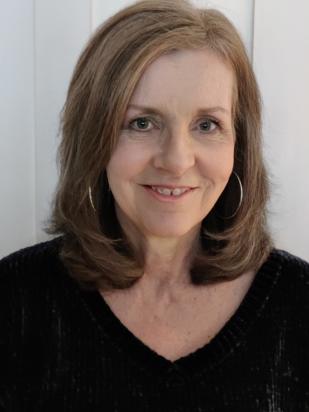Biography
I grew up in Nebraska and Indiana and attended Indiana University Bloomington as an undergraduate. I went off to college thinking that I would major in Political Science, but quickly became an English major. I liked the emphasis on interpretation and written communication in English—and the range of topics that were under discussion in my literature classes: discussions of literary texts are also discussions of history, culture, philosophy, and politics. I decided to continue at IU to pursue a PhD, and it was in my graduate course work that I became interested in teaching: it was through my minor in Composition Studies that I learned to think about how to make classroom practices enact larger educational goals.
Since coming to UND in 2001, I have worked to create the kinds of educational experiences for students that were so important to me. For many years, I directed the Composition Program and in that position, for example, I enjoyed working with graduate students on their teaching and also designing, for first-year students, a curriculum that would encourage them to explore larger cultural issues. Over the years, I have also been involved with UND's general education program, Essential Studies, and have considered it a means of making a liberal arts education available to all UND undergraduates. In my own classrooms, I create opportunities for active learning and productive discussion, and I encourage students to try out new ways of thinking and to take intellectual risks.
As chair of English, I am happy to work closely with individual students and to answer any questions they have about our major, minor, or Certificates (Creative Writing, Linguistics, and Writing and Editing). Many English courses fulfill ES requirements and assume no experience in English, and I am happy to work with students to find classes that I believe will be among the most fulfilling of their educational experience.
Recent Graduate Courses:
American Novels: Realism, Naturalism, Modernism
The Nineteenth-Century American Literary Debate over Slavery
The Politics of Sympathy: Nineteenth-Century American Sentimental Literature
Teaching College English Practicum
Teaching College English
Recent Undergraduate Courses:
Seminar in Literature: Literary Representations of Slavery
Seminar in Literature: Early 20th-Century American Novels
Literary Theory: "Psychoanalysis and Film Theory"
Introduction to Literary Criticism
Analyzing Worldview through Story
Reading and Writing About Texts (Introduction to the Major)
Young Adult Literature
Survey of American Literature
Women Readers and Writers
Black American Writers
Writing for Public Audiences
Composition I
- American Literature (19th-20th century)
- Literature of Reconstruction
- The Sentimental
- Construction of Race
- Popular Culture and Ideology
- Film Theory
- Pedagogy and Composition; Pedagogy and Literature
Peer-Reviewed Essays:
"Haunting Slavery: The Traumatic Gaze in Uncle Tom's Cabin and A Romance of the Republic.” A Comparative Literary History of Modern Slavery. Volume I: Slavery, Literature, and the Emotions. Eds. Madeleine Dobie, Mads Anders Baggesgaard, and Karen-Margrethe Simonsen. John Benjamins Publishing, 2024. 207-224.
“A ‘rich field of romantic incident’: Disruptive Excess in Tourgée's A Royal Gentleman.” Arizona Quarterly, 79.2 (2023): 1-33.
“Domesticating Desire: Fantasy and Social Change in Downton Abbey and Upstairs, Downstairs.” The Journal of Popular Television, 8.2 (2020): 217-236.
“Harem, Auction Block, and Stage: Sympathy and the Gaze as Object in A Romance of the Republic.” Journal of Narrative Theory. 50.1 (2020): 48-86.
“’The lamp in Mildred’s living room’: James M. Cain’s Mildred Pierce and Veblen’s Conspicuous Consumption.” PLL 52.3 (2016): 255-290.
“Writing Reconstruction: Racial Fluidity and National Reunion in A Romance of the Republic.” ESQ: A Journal of the American Renaissance. 61:4 (2015): 599-634.
“Bodies, Southern Nostalgia, and the Construction of Whiteness in Divine Secrets of the Ya-Ya Sisterhood.” The Journal of Popular Culture. 42.6 (2009): 1115-1133.
“Charles Chesnutt’s ‘The Dumb Witness’ and the Culture of Segregation.” (co-authored with Eric A. Wolfe). African American Review. 42.1 (2008): 61-73.
Reprinted in Representing Segregation: Toward an Aesthetics of Living Jim Crow. Eds. Brian Norman and Piper Kendrix Williams. SUNY Press, 2010: 57-72.
Reprinted in Short Story Criticism: Excerpts from Criticism of the Works of Short Fiction Writers. Vol. 184. Detroit: Gale, 2013. 88-96.
“Writing on Boundaries: A Cultural Studies Approach to Literature and Writing Instruction” (co-authored with Eric A. Wolfe). Integrating Literature and Writing Instruction: First-year English, Humanities Core Courses, Seminars. Eds. Judith H. Anderson and Christine Farris. New York: Modern Language Association, 2007. 195-210.
“An ‘imperceptible infusion’ of Blood: Iola Leroy, Racial Identity and Sentimental Discourse.” Genre: Forms of Discourse and Culture 37 (2004): 433-460.
“Region and Race: National Identity and the Southern Past.” A Companion to The Regional Literatures of America. Ed. Charles L. Crow. Oxford: Blackwell, 2003. 57-73. (Invited Essay).
“Writing Reconstruction: Race and ‘Visualist Ideology’ in Whitelaw Reid’s After the War.” Journal of Narrative Theory. 29.1 (1999): 85-109.
“‘Why, why do we not write our side?’: Gender and Southern Self-Representation in Grace King’s Balcony Stories.” Breaking Boundaries: New Perspectives on Regional Writing. Ed. Sherrie A. Inness and Diana Royer. U of Iowa P, 1997. 54-71.
Reprinted in Short Story Criticism: Excerpts from Criticism of the Works of Short Fiction Writers. Vol. 195. Detroit: Gale, 2014. 205-214.
“‘This Could Have Been Me’: Composition and the Implications of Cultural Perspective.” Cultural Studies in the English Classroom. Ed. James A. Berlin and Michael J. Vivion. Portsmouth: Boynton, 1992. 231-243.
Indiana University, Bloomington, Indiana:
Ph.D. in English, 1995 (American Literature; minor in Composition Studies).
M.A. in English, 1988.
A.B. with Honors in English, 1985.
